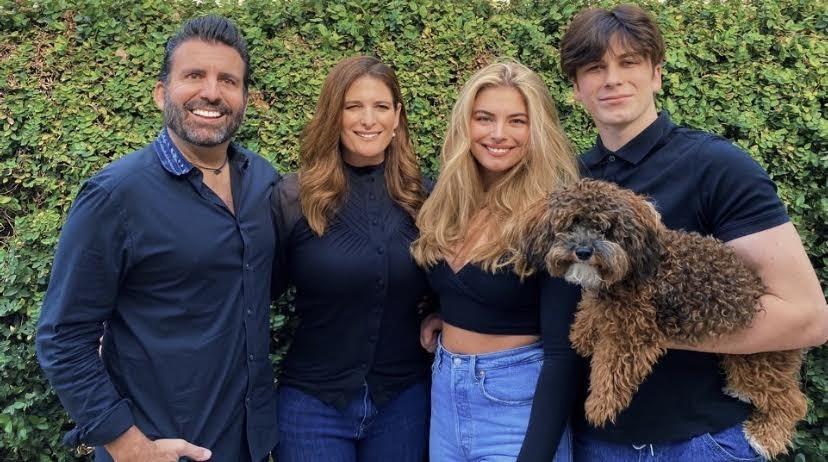According to the World Health Organization, 466 million people in the world live with deafness, more than 5% of the world’s population. A consequence of being a minority is often they are misrepresented in the mainstream. What the deaf want to make clear, however, is that they are unashamed of who they are.
Leslie Decker, a lecturer at the University of Arizona who teaches a variety of disability and psychoeducational studies and American Sign Language courses, said she wants to set the record straight on her deafness. First: contrary to popular belief, deaf people can drive. Second: call her deaf, as she is proud to be it. Third: avoid the term “hearing impaired” — her deafness is not an impairment.
“That is an okay term and appropriate for people who lose their hearing at a later age,” Decker said. “You know, they wake up someday without hearing and live without the deaf culture, without the language deaf culture brings — that does bring impairment. They do have a disability there. But I was born this way, I grew up in this culture, so I have language and culture internalized. It’s who I am.”
And there is indeed a strong deaf culture all over the world, one that is very loud.
“We congregate in different areas, different events, we have deaf clubs that we all come to. During those events we sign,” Decker said. “And know that you don’t have to be deaf to be part of these events, there are hearing people that participate as well, but we communicate through sign language. The deaf community really takes advantage of those opportunities if they are around.”
The culture is not only loud, but diverse as well. Just as there are several languages globally, so are there several sign languages as well, and with them are various facets that differ from deaf culture to deaf culture.
Gerald Brown is a coach for the varsity track and girls basketball team for the Arizona State School for the Deaf and the Blind. Brown elaborated on these culture variations.
“Every nation has their own sign language,” Brown elaborated. “Just like America, we use ASL, but in Britain they use British Sign Language, Mexico has Mexican Sign Language. For people who grow up in the deaf school, deaf family, they tend to sign one way versus someone who grows up with parents who don’t know sign language or who go to mainstream school with an interpreter. There is a huge range of ASL.”
Brown himself is exposed to these influences regularly as a Black deaf man who attended a hearing school as well as being married to a spouse who is a child of deaf adult — or “CODA.”
“Like, in the Black deaf community, we have a sign for ‘trippin,’ which exists in ASL in the Black community but does not exist in other communities, so culture has a big influence,” Brown said. “Out in the real world, people learn different ways, and it is kind of frustrating sometimes, but that’s what it is, it’s a language. What’s important in any communication, whatever you’re using, is there’s mutual understanding.”
RELATED: The Shared Shelf Book Club encourages vital conversations within the College of Medicine
Daniela Maucere, a freshman at the UA majoring in film and television, is hard of hearing and a CODA herself, with two deaf parents. Being a bridge between two worlds, Maucere has a unique perspective.
“I see a whole different world than most people do, and for that I see a lot of hardships and exclusion, but also see a beautiful community and the beauty of American Sign Language,” Maucere said.
Maucere also opened up about the difficulties of being deaf in a COVID-19 ridden world.
“[COVID-19] has definitely been a struggle, especially because of the mask mandate, many people don’t realize it but deaf people usually solely rely on lip-reading when communicating with hearing people, so now since everyone is wearing masks it makes it extremely difficult for communication,” Maucere said in an email.
In addition, Decker delved into how COVID-19 has impacted deaf-to-deaf culture and communication.
“A component of our grammar is mouth morphing, and this is not the word of English on our mouth. What this is is different, actual distinctions on our face that are adverbial, that can indicate size, that can indicate a question at the end of a sentence, distance. Quite a bit is utilized on the face … . When you have a mask on, it weakens the language almost because we can’t use the robustness and native-ness of our language,” Decker said.
RELATED: What 2020 has taught us
Living deaf already has its difficulties, but as Decker and Maucere highlighted, COVID-19 has thrown in its new set of challenges. In addition to learning the basics of ASL, investing in clear masks and ensuring mainstream media has closed captioning and well trained interpreters, what can be helpful when interacting with a deaf person is to treat them as any other.
“Don’t panic, get a paper and a pencil or grab your iPhone,” Decker said. “Be an ally, keep an open mind, be open to discussion. Support equal access and communication, that’s what’s most important.”
If society is to create a more equal world between hearing and deaf, it all starts with listening.
“Be open minded, be willing to listen, be willing to learn about our culture. All of us deaf and hard of hearing, we know about hearing culture, we know about your world, we know about your history,” Brown said. “Now it’s time to take a step back and listen to understand about what we have, what we are and who we are.”
Follow Allison Fagan on Twitter















